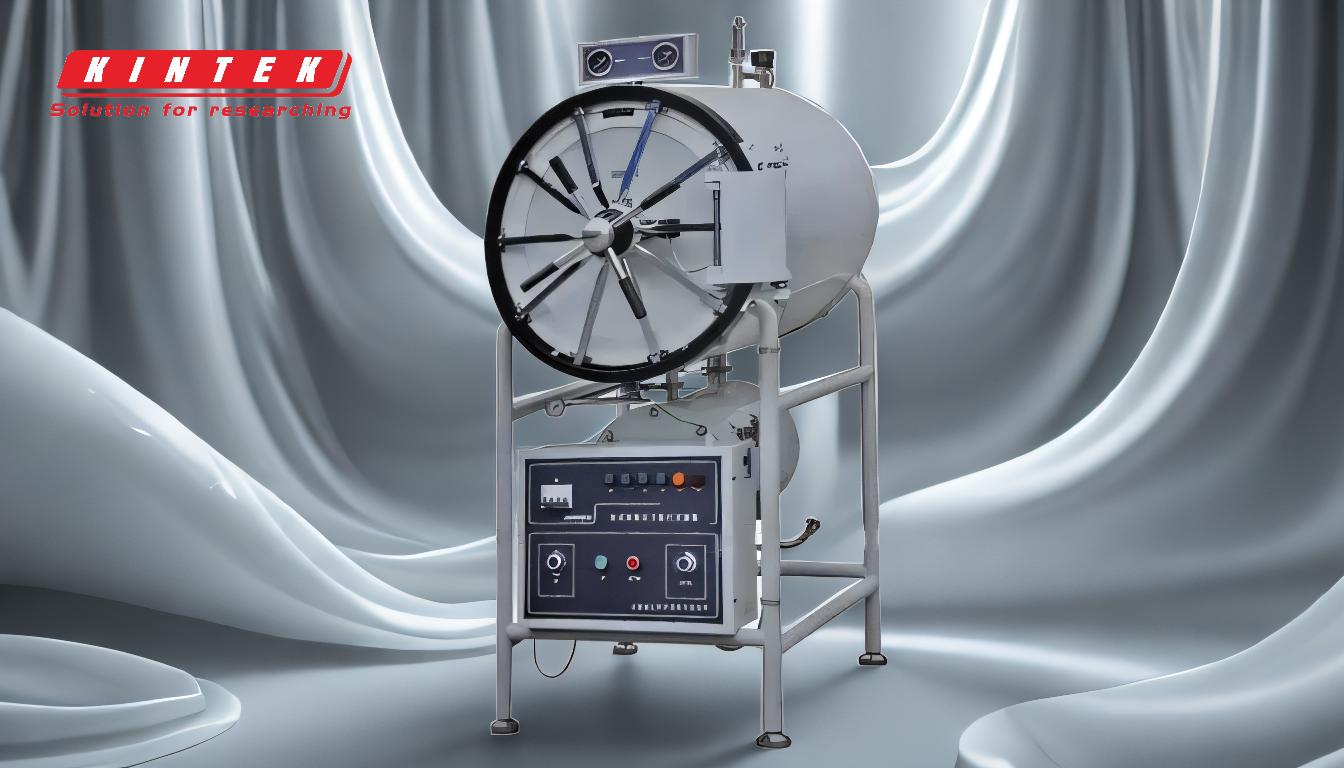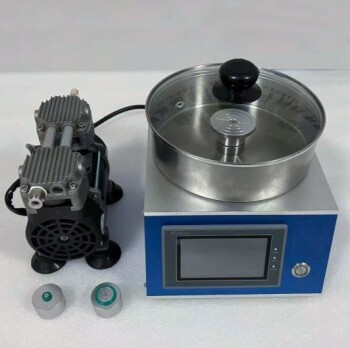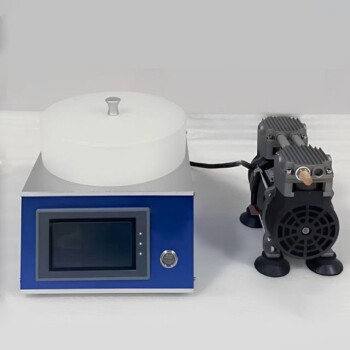In short, a laboratory autoclave works by using high-pressure steam to achieve temperatures that are lethal to all microorganisms. It functions like a sophisticated, industrial-grade pressure cooker. By leveraging the physical principle that increasing pressure raises the boiling point of water, the autoclave's steam can deliver sterilizing heat far more effectively than boiling water alone.
The fundamental principle of an autoclave is moist heat sterilization. By trapping steam under high pressure, it forces the temperature to rise well above 100°C (typically to 121°C), ensuring rapid heat penetration that destroys the essential proteins of bacteria, viruses, and even highly resistant spores.
The Core Principle: Why Pressure is the Key
To understand an autoclave, you must first understand why simply boiling items isn't enough for true sterilization. The relationship between pressure, temperature, and moist heat is the entire foundation of its operation.
The Limitation of Simple Boiling
Boiling water at standard atmospheric pressure reaches a maximum temperature of 100°C (212°F). While this temperature kills many active bacteria, it is not sufficient to eliminate highly resistant bacterial spores.
For complete sterilization, a higher temperature is required to guarantee the destruction of all microbial life.
How Pressure Changes the Game
An autoclave is a sealed chamber, much like a pressure cooker. As water inside is heated into steam, the steam cannot escape, causing the pressure inside the chamber to build.
This increase in pressure forces the boiling point of water to rise. At approximately 15 pounds per square inch (psi) above atmospheric pressure, the steam's temperature reaches 121°C (250°F).
The Power of Moist Heat
At this higher temperature, the steam (moist heat) rapidly penetrates materials. It transfers thermal energy far more efficiently than dry air.
This intense heat coagulates and denatures the essential proteins within microorganisms, effectively and irreversibly killing them.
The Anatomy of a Sterilization Cycle
A modern autoclave runs a precise, automated cycle to ensure safety and effectiveness. While programs can be customized, they almost always follow four distinct phases.
Phase 1: The Purge (Air Removal)
Before sterilization begins, all ambient air must be removed from the chamber. This is a critical step because trapped air creates "cold spots" that steam cannot reach, leading to sterilization failure.
The incoming steam is used to displace the cooler, denser air, which is typically vented from the bottom of the chamber.
Phase 2: The Sterilization Hold
Once all air is purged, the chamber is held at the target temperature and pressure (e.g., 121°C at 15 psi) for a specified duration.
A typical cycle holds for 15-20 minutes, but this time can be extended depending on the size and density of the items being sterilized. This is the phase where the actual microbial killing occurs.
Phase 3: The Exhaust (Depressurization)
After the hold time is complete, the steam is slowly released from the chamber through an exhaust valve, and the pressure gradually returns to ambient levels.
This process must be controlled, especially for liquids, to prevent them from boiling over violently as the pressure drops.
Phase 4: The Drying Stage
Many cycles include a final drying phase, particularly for items like glassware, instruments, or wrapped packs. This is often achieved by drawing a deep vacuum to boil off any remaining moisture at a lower temperature.
This ensures the sterilized items emerge dry and ready for use or storage.
Understanding the Trade-offs and Critical Considerations
While highly effective, an autoclave is a precise instrument that requires proper use. Missteps can lead to incomplete sterilization or damage to the equipment.
Not All Materials are Autoclavable
The high heat and pressure will destroy or damage many materials. You should never autoclave heat-sensitive plastics, certain chemicals, or items that can be corroded by steam.
Load Size and Density Matter
A large, dense load requires a longer sterilization time than a small, loosely packed load. The steam needs sufficient time to penetrate to the very center of the densest items in the chamber.
The Importance of Proper Loading
Never overpack an autoclave. Items should be arranged to allow for free circulation of steam. Bags should be left slightly open, and containers should be placed on their sides to prevent air from being trapped.
Making the Right Choice for Your Goal
Selecting the correct cycle is crucial for achieving safe and effective sterilization for different materials.
- If your primary focus is sterilizing liquids (like media): Ensure you use a slow exhaust or "liquid" cycle to prevent the liquid from boiling over during depressurization.
- If your primary focus is sterilizing glassware or instruments: Select a "gravity" or "vacuum" cycle that includes a post-sterilization drying phase to ensure items are ready for immediate use.
- If your primary focus is decontaminating biohazardous waste: Use a cycle with a longer sterilization hold time to guarantee complete heat penetration and sterilization of dense materials.
Understanding these core principles allows you to move beyond simply pressing "start" and ensures your sterilization processes are both effective and safe.
Summary Table:
| Autoclave Cycle Phase | Key Function | Typical Parameters |
|---|---|---|
| Purge (Air Removal) | Removes ambient air to prevent cold spots | Steam displaces air, which is vented |
| Sterilization Hold | Kills all microorganisms | 121°C at 15 psi for 15-20 minutes |
| Exhaust (Depressurization) | Slowly releases steam and pressure | Controlled release to prevent boil-over |
| Drying Stage | Removes residual moisture | Vacuum cycle for dry, ready-to-use items |
Ensure your lab's safety and compliance with reliable sterilization from KINTEK.
As a leading provider of laboratory equipment, KINTEK understands that precise and dependable sterilization is non-negotiable for your research integrity and safety protocols. Our range of autoclaves is designed to meet the rigorous demands of laboratories, ensuring complete decontamination of instruments, glassware, media, and biohazardous waste.
Let us help you achieve peace of mind with a sterilization solution tailored to your specific needs.
Contact KINTEK today to discuss your lab's requirements and find the perfect autoclave for your applications.
Related Products
- Laboratory Sterilizer Lab Autoclave Herbal Powder Sterilization Machine for Plant
- Desktop Fast Laboratory Autoclave Sterilizer 35L 50L 90L for Lab Use
- Laboratory High Pressure Steam Sterilizer Vertical Autoclave for Lab Department
- Desktop Fast Laboratory Autoclave Sterilizer 20L 24L for Lab Use
- Portable Digital Display Automatic Laboratory Sterilizer Lab Autoclave for Sterilization Pressure
People Also Ask
- What is the temperature of autoclave in microbiology lab? Achieve Sterile Conditions with 121°C
- What is the function of autoclave in tissue culture laboratory? Ensure Absolute Sterility for Successful Cell Growth
- Is an autoclave the same as a steam sterilizer? Understanding the Key to Reliable Sterilization
- What tests are done on an autoclave? Ensure Sterilization Success with a Complete Testing Protocol
- How does an autoclave work in microbiology? Achieve Complete Sterilization with High-Pressure Steam




















